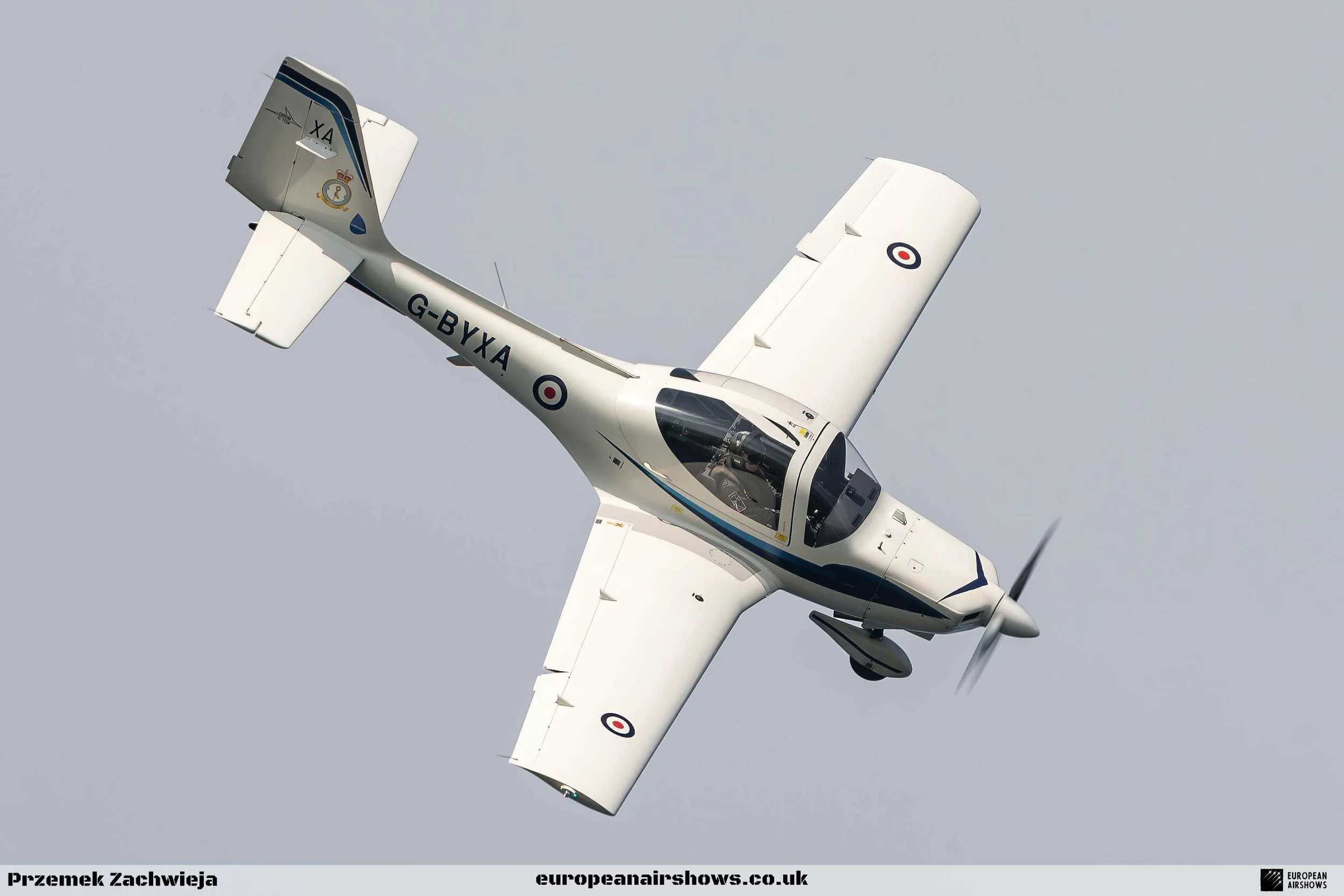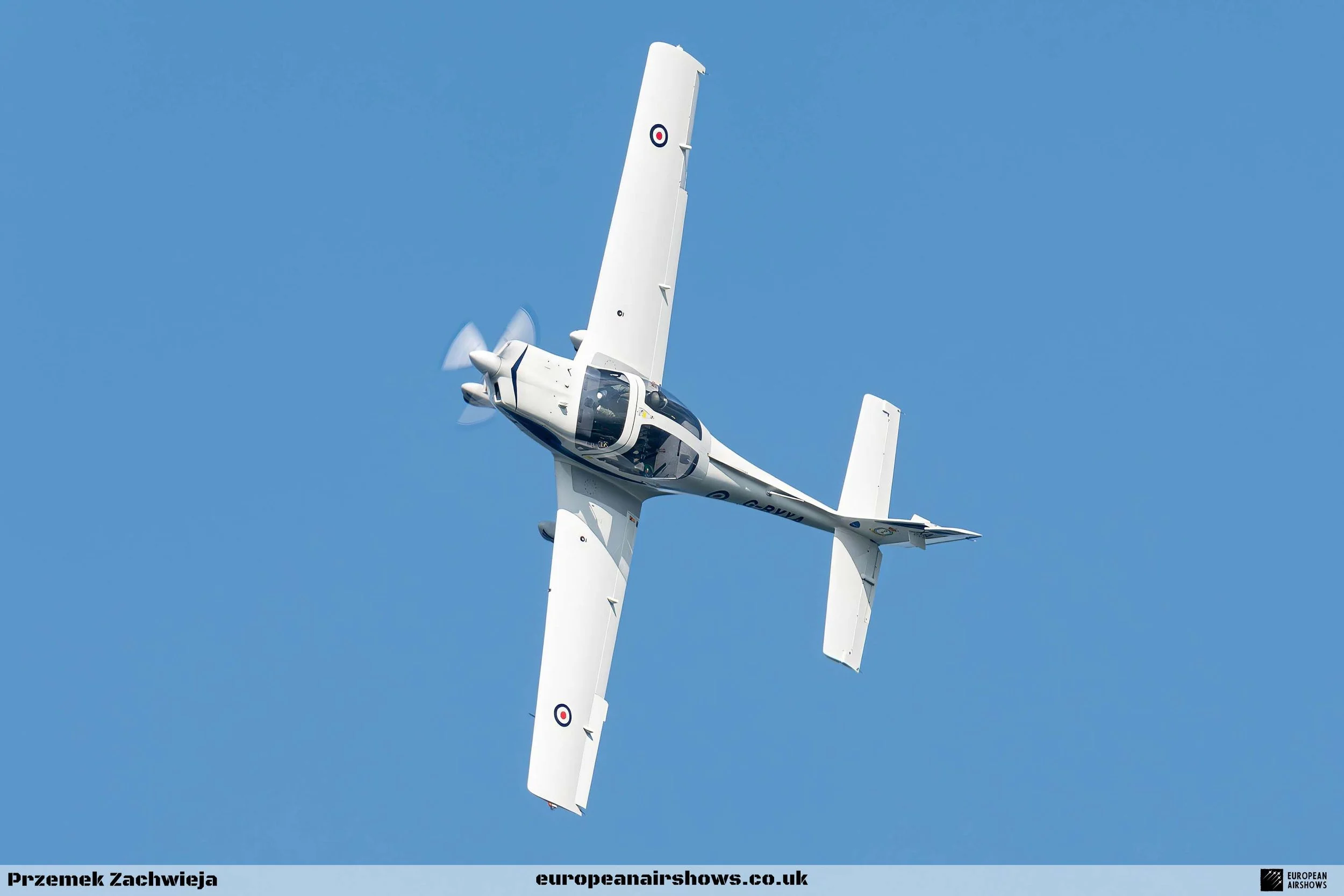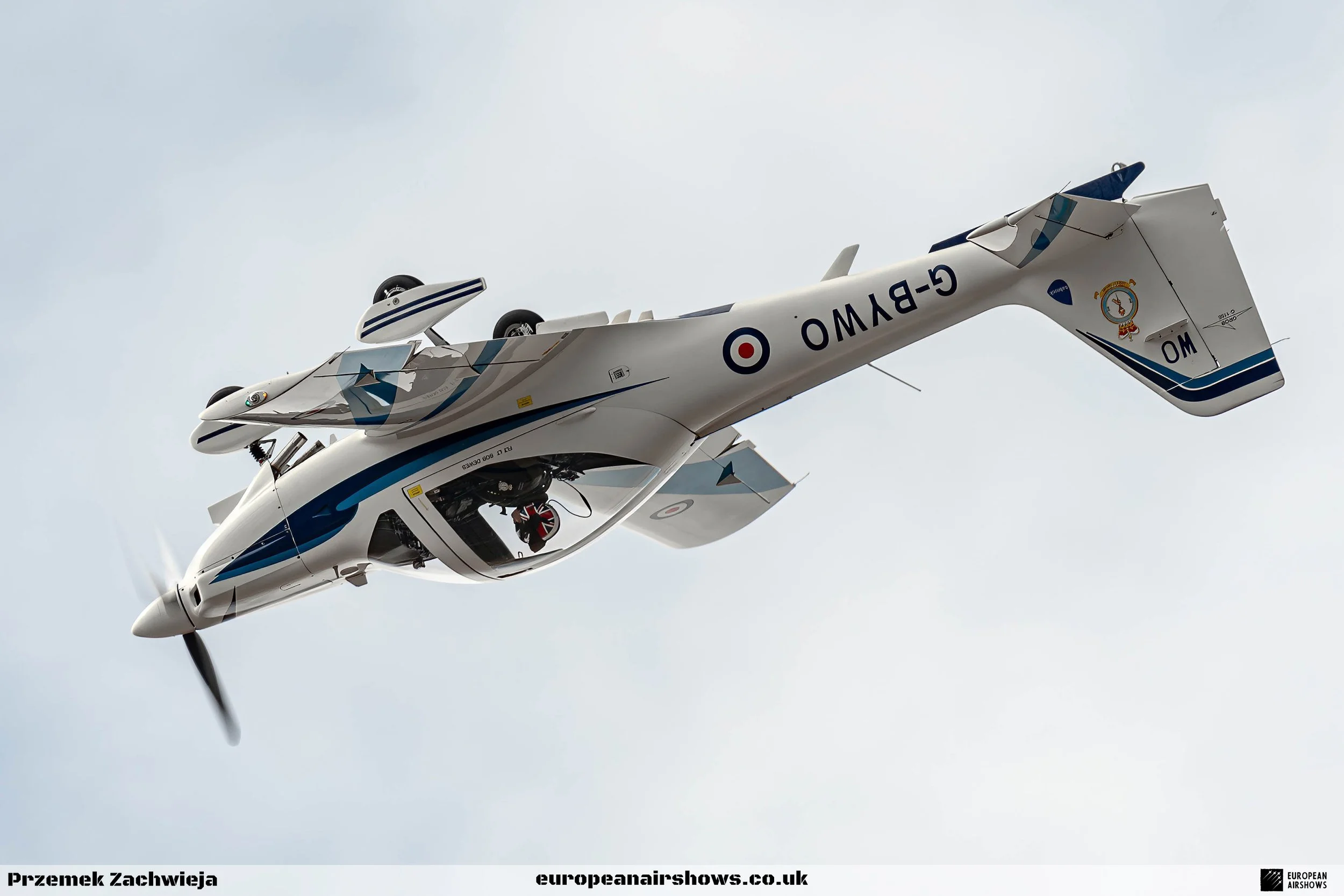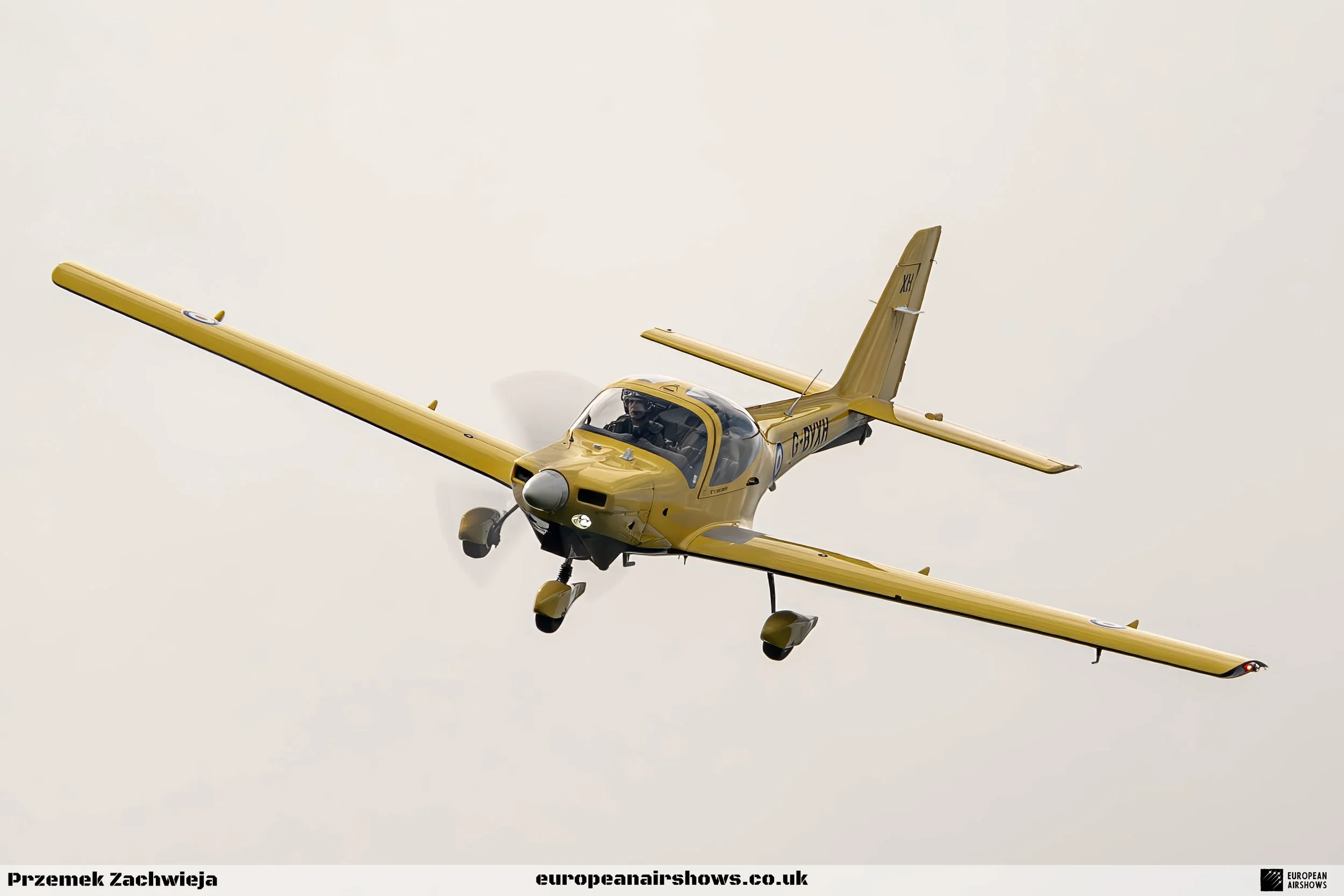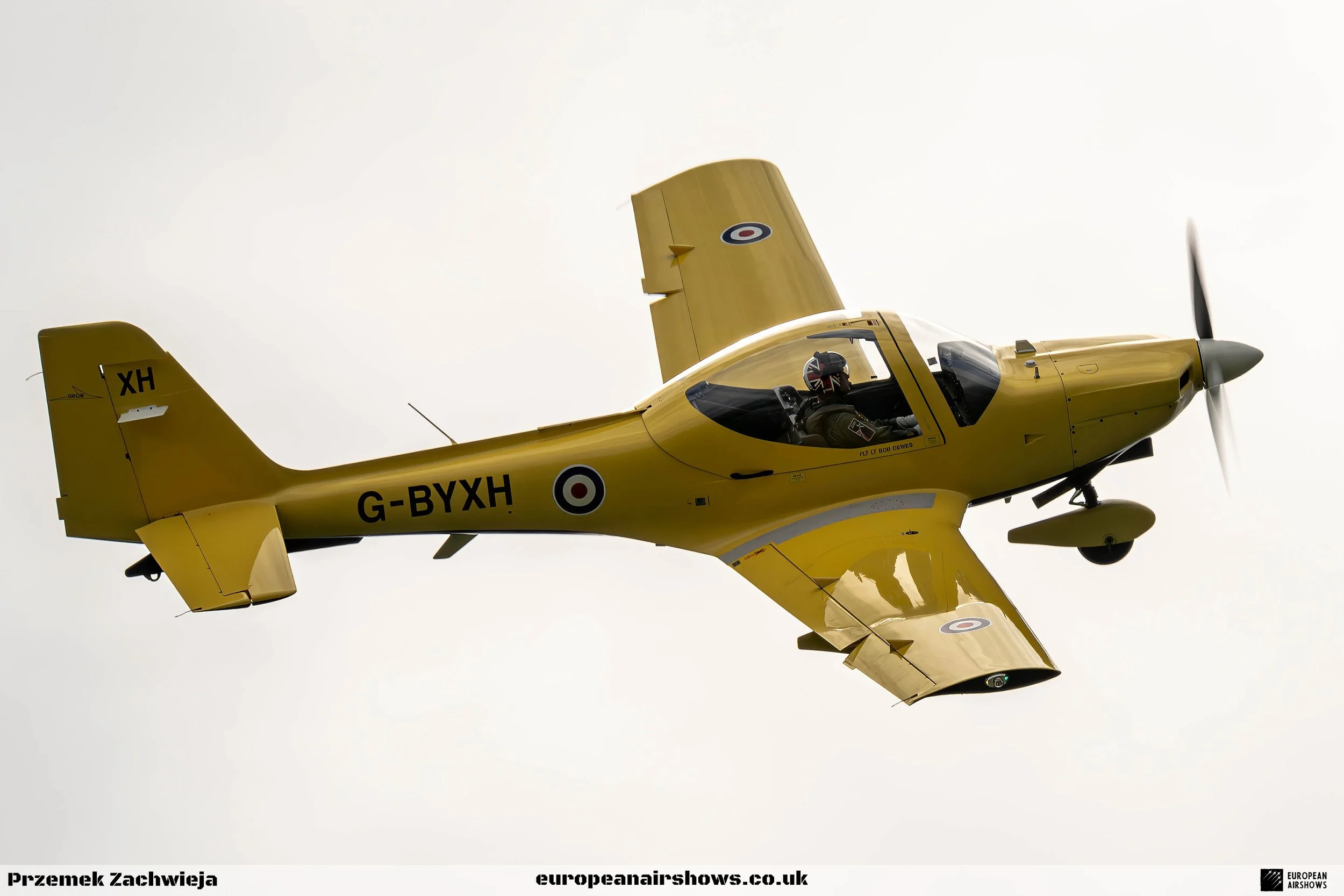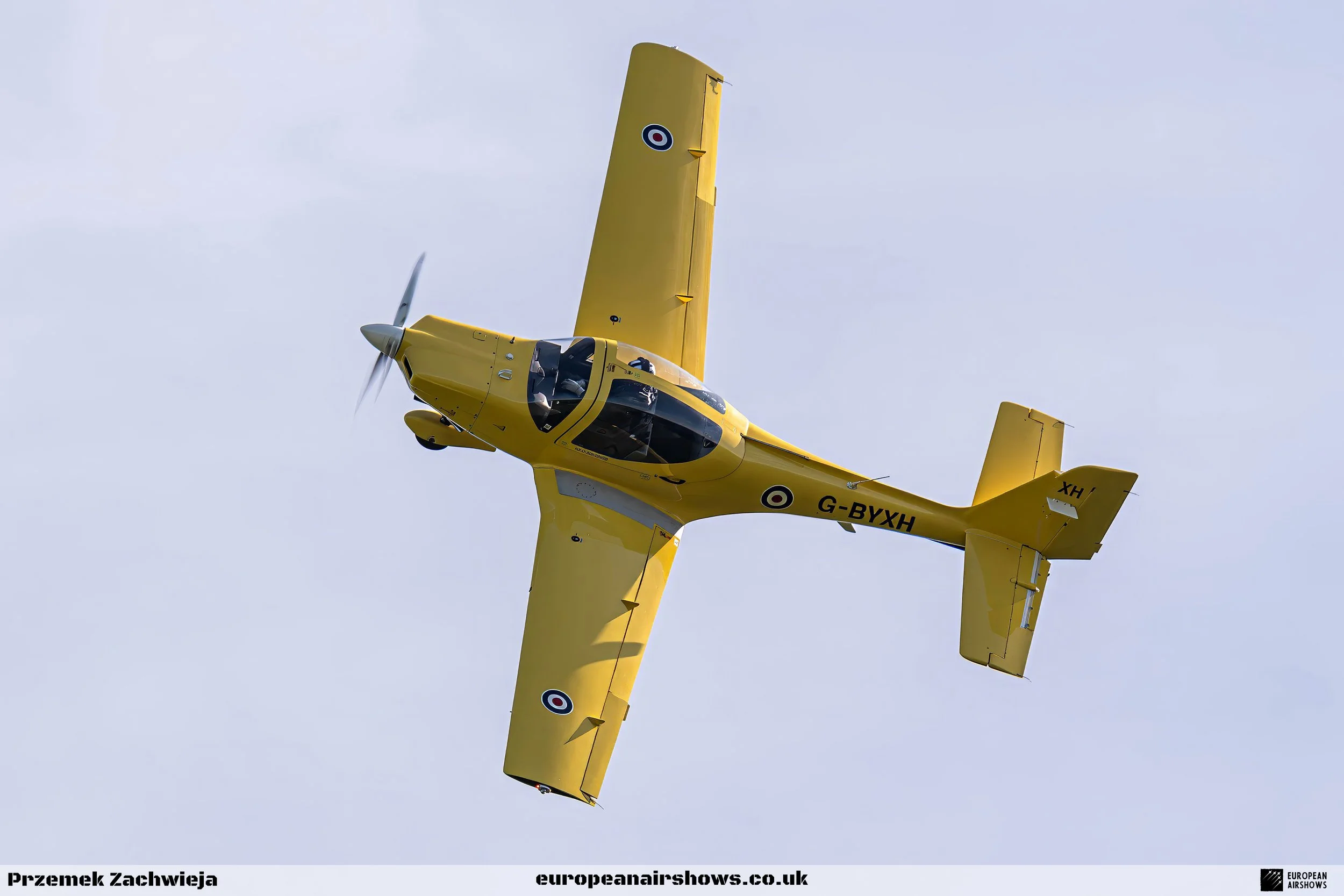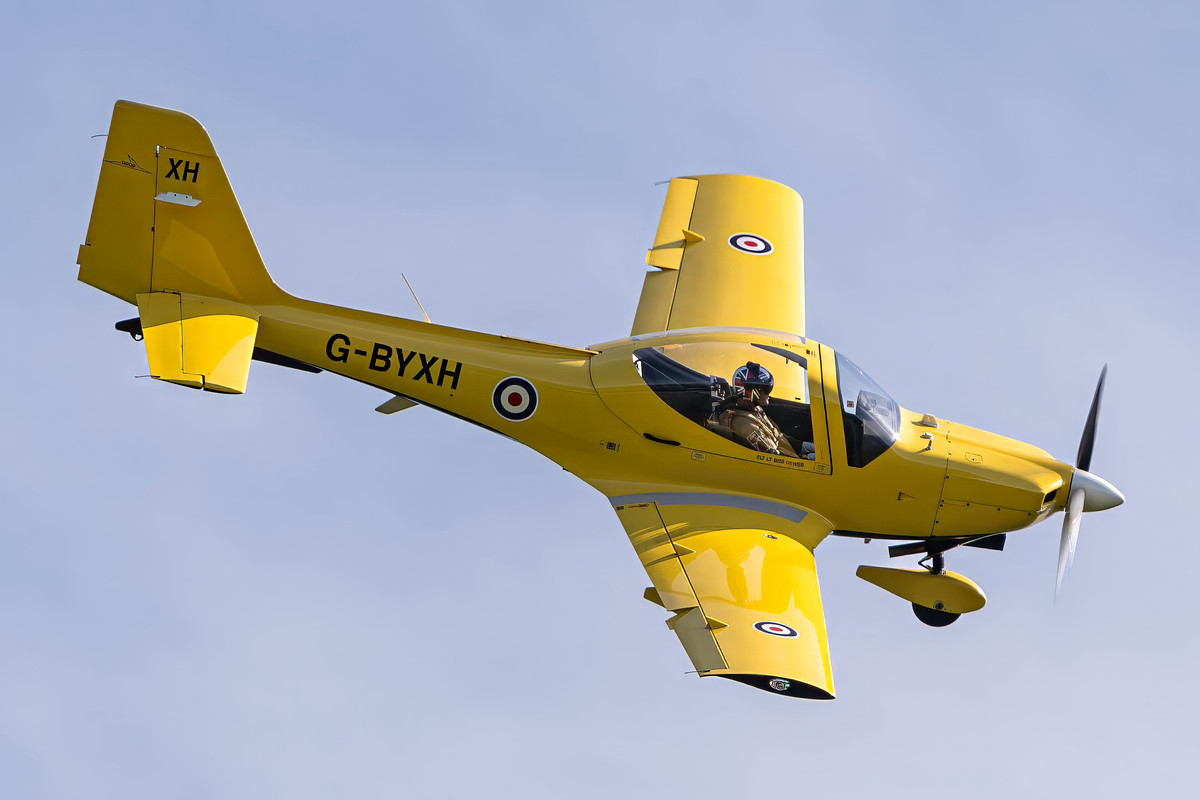
RAF Tutor Display Team
Tutor Display Team
The RAF Tutor Display Team presents a compelling demonstration of the Grob Tutor T1, a light aircraft renowned for its role in Royal Air Force pilot training. Unlike high-performance aerobatic planes, the Tutor T1 relies on its agility and versatility to deliver an engaging show. The team’s performances highlight the aircraft’s strengths, showcasing the exceptional skill required to master its controls and execute complex maneuvers with finesse.
Each display typically opens with a striking dive from height, enabling the pilot to gain the momentum needed for a sequence of precise aerial feats. The pilot must carefully manage the interplay of speed and altitude, a challenge that underscores their expertise and the Tutor’s responsive design. This energy management allows for a seamless flow of maneuvers, blending technical accuracy with an artistic flair that distinguishes the team’s presentations.
Known for its smooth transitions and graceful formations, the RAF Tutor Display Team emphasizes control over raw power, offering a refreshing contrast to louder, faster airshow acts. The Grob Tutor T1, though modest in size and sound, shines as a platform for displaying the pilot’s artistry and the aircraft’s precision. Through their performances, the team not only entertains but also reflects the high standards of RAF training and the capabilities of this understated yet impressive aircraft.
About the Grob G 115E
The Grob G 115E, a variant of the Grob G 115 series, is a single-engine, two-seat training aircraft developed by Grob Aircraft, a German aerospace company founded by Burkhart Grob in 1971. The G 115 series first took flight in November 1985 as a lightweight, aerobatic aircraft designed for civilian flight training, constructed primarily from carbon-fiber-reinforced composites—a pioneering feature at the time. The G 115E, introduced later, was tailored for military use, equipped with a more powerful 180-horsepower Lycoming AEIO-360 engine and a three-blade variable-pitch propeller, enhancing its performance for aerobatic maneuvers and elementary flight training. Certified by the European Aviation Safety Agency (EASA) and built with a robust, corrosion-resistant airframe, the G 115E became a popular choice for air forces seeking a reliable and cost-effective trainer.
Development of the G 115E stemmed from Grob’s earlier models, such as the G 115A and G 115D, but it was specifically adapted to meet the needs of military operators. Its design includes a fixed tricycle undercarriage with spatted wheels, a spacious cockpit with side-by-side seating, and a wide canopy offering excellent visibility—ideal for instructor-student interaction. The aircraft’s versatility allowed it to serve not only as a basic trainer but also as a platform for aerobatic training and pilot screening. Over the years, it has been adopted by several air forces, including those of Finland, Bangladesh, and the United Kingdom, with production continuing into the 21st century as Grob Aircraft refined its offerings.
Despite its success, the G 115E has faced challenges, including notable incidents that highlighted technical issues. For instance, in 2013, the aircraft was re-certified with a new MT Propeller after problems with the original design, and its inverted oil system was redesigned to improve reliability during aerobatics. While the G 115E has largely been phased out in some roles in favor of more advanced trainers like the Grob G 120TP, its legacy endures as a dependable workhorse in military aviation training, with over 360 units delivered to various operators worldwide by the early 2000s.
Specifications
Crew
2
Length
7.79 m (25 ft 7 in)
Wingspan
10.00 m (32 ft 10 in)
Height
2.82 m (9 ft 3 in)
Max Speed
250 km/h (160 mph, 130 kn)
Range
1,150 km (710 mi, 620 nmi)
Service Ceiling
6,095 m (20,000 ft)
g limits
+6 to -3
Grob G 115E in the Royal Air Force
In the Royal Air Force (RAF), the Grob G 115E, designated as the Tutor T1, entered service in 1999 as a replacement for the aging Scottish Aviation Bulldog T1, which had served University Air Squadrons (UAS) and Air Experience Flights (AEF) since the 1970s. Under a Private Finance Initiative (PFI) scheme, the RAF contracted Babcock International to own and maintain a fleet of 99 Tutor T1s, which were delivered between 1999 and 2002. Painted in a distinctive white livery with blue flashes and RAF roundels, these aircraft were operated under civilian registrations and assigned to No. 6 Flying Training School (6 FTS), providing elementary flying training to university students and air cadets across 15 UAS units and 13 AEFs throughout the UK.
The Tutor T1’s role in the RAF expanded beyond initial training, with some aircraft upgraded in 2009 to Enhanced Avionics (EA) variants featuring modern Garmin GNS 430W GPS systems and digital instrumentation, improving navigational capabilities. The aircraft also served with the Central Flying School (CFS) for instructor training and with 727 Naval Air Squadron for Royal Navy pilot grading, showcasing its versatility. However, its service history was marred by incidents, including a 2009 mid-air collision between two Tutors that killed four occupants and a grounding of the fleet in 2013 after propeller failures, underscoring maintenance and design challenges. By 2020, the RAF began phasing out the Tutor T1 in favor of the more advanced Grob Prefect T1, though it remains in limited use for UAS and AEF tasks as of April 2025.
Did You Know?
- The Grob G 115E’s airframe is so lightweight due to its carbon-fiber construction that it weighs less than some high-performance sports cars, with an empty weight of just 670 kg (1,477 lbs).
- Unlike many training aircraft, the G 115E features a fully aerobatic inverted oil system, allowing it to perform sustained inverted flight—a rare capability for its class.
- The aircraft’s three-blade MT Propeller, introduced after a 2013 re-certification, is made from wood-composite materials, offering a quieter operation compared to traditional metal propellers.
- The G 115E’s canopy is made from a single piece of acrylic, providing an unobstructed 270-degree view—something pilots often rave about but rarely find in other trainers.
- Its wing design incorporates a unique laminar flow airfoil, which reduces drag and boosts efficiency, a feature borrowed from high-performance gliders Grob originally designed.
Test Your Knowledge
1. What is the maximum range of the Grob G 115E?

